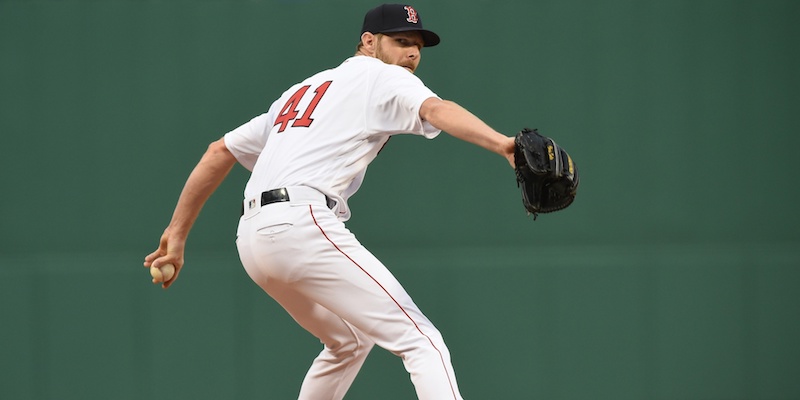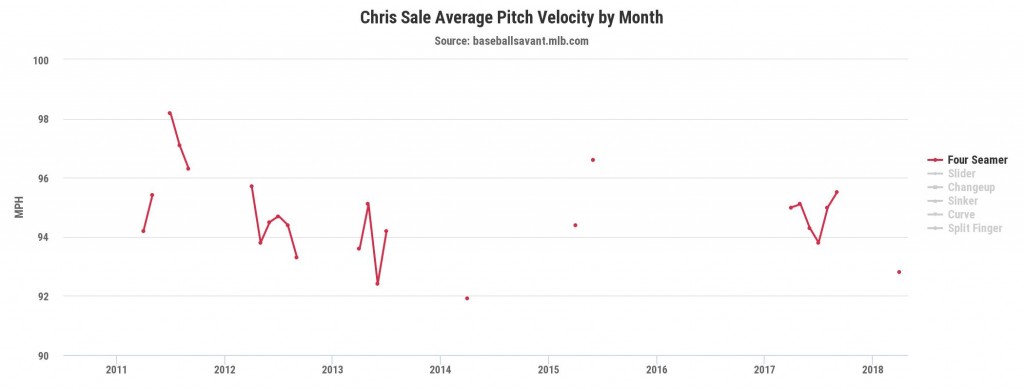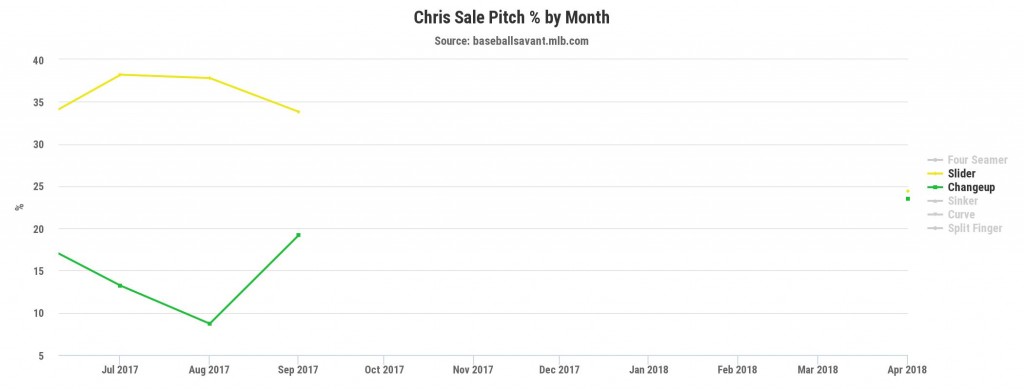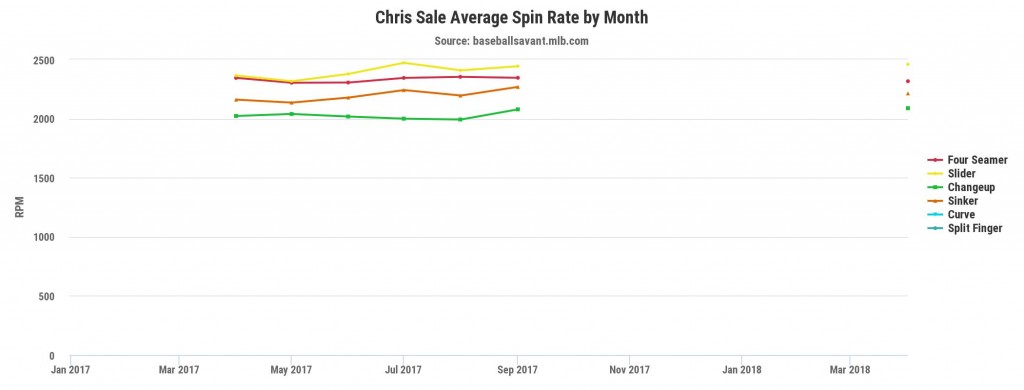There is panic about Chris Sale coming. You can feel it in the breeze.
Through no fault of his own, Sale took another no decision against the Royals on Tuesday night. It’s sort of his thing. Sale’s been excellent this year, and yet because he hasn’t been quite what he was last season, there’s already this weird sense of impatience building on Sale Day. So is there actually anything going on? To the charts!
One of the most noticeable changes in Sale’s season has been the velocity. Look at where his fastball is pacing currently, compared to seasons past:
That’s a little alarming, only because his fastball is currently as slow as it’s been in four years. Only once — in 2014 — has he averaged a fastball under 92 miles per hour. The good news is that it hasn’t affected his results too much yet:
Taking a look at how hitters are making contact against him, it’s clear that Sale is still pitching at a pretty elite level. He’s getting more pop-ups and ground balls while cutting back, ever so slightly, on fly balls and line drives. The amount of solid contact against him is actually down from six percent to two percent (and yet the percent of times hitters are barreling up against him is going up? Baseball actually doesn’t make any sense). His stuff still looks pretty good, too:
The one thing to keep an eye on here is the drop in zone percentage. Throwing strikes five percent less often isn’t insignificant, and that coupled with a dip in velocity is a talk radio crisis waiting to happen. An explanation? Sale is leaning more heavily on his changeup early in the season, at the cost of his slider:
After finishing 2017 throwing his slider 33 percent of the time and his change 19 percent of the time, he’s now throwing those pitches 24 percent of the time and 23 percent of the time, respectively. Basically, after throwing two sliders for every one changeup last season, he’s throwing them at an equal clip this year. That’s something to watch going forward, primarily because Sale’s slider is a significantly better pitch than his changeup. Sale’s ran close to a 50 percent strikeout rate on sliders last season. Changeups? Only 14 percent. With some context, the curious pitch selection makes more sense:
Alex Cora said yesterday Chris Sale’s been working on his mechanics and that his slider hasn’t been what he wants it to be yet. So, even putting velocity aside, you haven’t been crazy to think Sale’s been a tick off from his uber elite self
— Evan Drellich (@EvanDrellich) May 1, 2018
He’s still getting his normal amount of both in-zone swings and out-of-zone chases, though. His general swing percentage is holding steady, and his whiff rate has actually gone up a tick. For the real nerds among you, his spin rate looks pretty normal, too:
It’s hard to tell, but those little dots on the far right — his current spin rates — match up pretty closely to where he was pacing last year. That’s a good sign, especially as the weather starts to heat up, allowing pitchers to grip the ball more comfortably.
I’m not going to spend brain power worrying about Sale. Someone will, but it won’t be me, and it shouldn’t be you.
Header photo by Bob DeChiara — USA TODAY Sports






But, Cam, I AM concerned about Chris Sale because I’m not sure the Red Sox will know what to do with him in 2019. The answer is spin him off before the 2019 trade deadline to a NL contender who has four prospects to trade, including some young people who can hit, which the Sox don’t have in the minors. And don’t even consider foolishness like ponying up the 28 to 32 MM/yr it will take to extend him before free agency or sign him as a FA.
Trade Chris Sale next year? Is that a serious post? Sale is every bit worth $28-32 million at his current level and before you say he’s about to be in decline mode, consider the likes of Corey Kluber and Max Scherzer, last year’s Cy Young winners, who are both in their mid 30’s. Pawning off Sale for prospects when we have a team good enough to win it all now and next year (and presumably after that as well), is just a dumb idea.